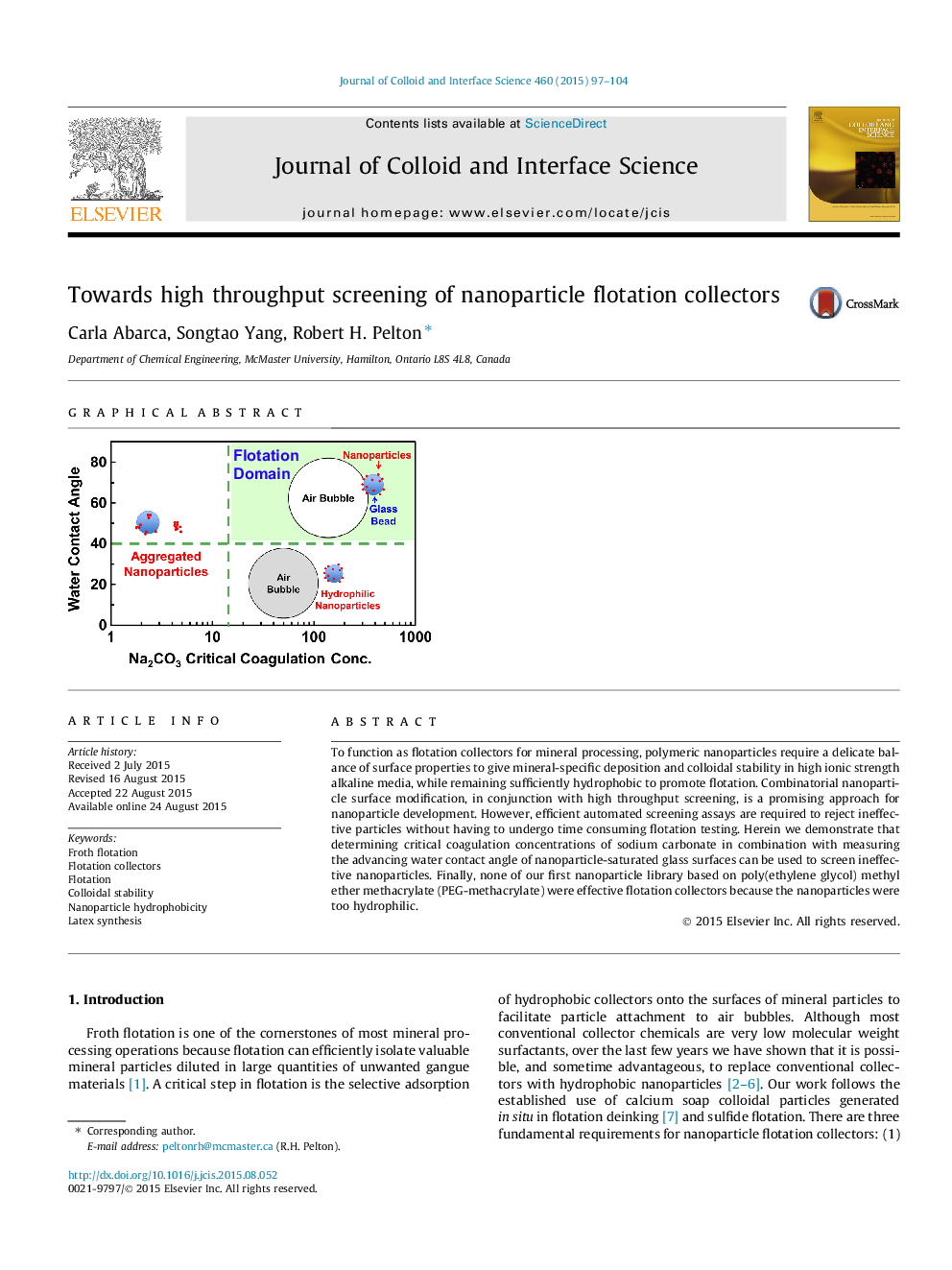| Article ID | Journal | Published Year | Pages | File Type |
|---|---|---|---|---|
| 606556 | Journal of Colloid and Interface Science | 2015 | 8 Pages |
To function as flotation collectors for mineral processing, polymeric nanoparticles require a delicate balance of surface properties to give mineral-specific deposition and colloidal stability in high ionic strength alkaline media, while remaining sufficiently hydrophobic to promote flotation. Combinatorial nanoparticle surface modification, in conjunction with high throughput screening, is a promising approach for nanoparticle development. However, efficient automated screening assays are required to reject ineffective particles without having to undergo time consuming flotation testing. Herein we demonstrate that determining critical coagulation concentrations of sodium carbonate in combination with measuring the advancing water contact angle of nanoparticle-saturated glass surfaces can be used to screen ineffective nanoparticles. Finally, none of our first nanoparticle library based on poly(ethylene glycol) methyl ether methacrylate (PEG-methacrylate) were effective flotation collectors because the nanoparticles were too hydrophilic.
Graphical abstractFigure optionsDownload full-size imageDownload high-quality image (48 K)Download as PowerPoint slide
